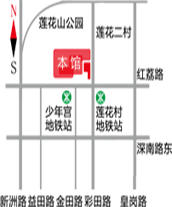
- The Pure Land of the Soul - On the Painting of the Yangtze River
-
Yang Feiyun
Mr. Wu Changjiang is my classmate in the same class. After the Cultural Revolution in 1978, we were among the first to be admitted to the Central Academy of Fine Arts. Changjiang applied to the Printmaking Department, and I chose the Oil Painting Department; Afterwards, they all became teachers at the Central Academy of Fine Arts. For decades, as fellow artists, colleagues, and friends, there has been more communication and consensus in the field of painting art, which has led to a deeper understanding and lasting friendship between us.
The Yangtze River grew up in Tianjin and studied in Beijing, but found a source of inspiration for its artistic development in Xizang. Since he graduated and created a group of Xizang lithographs, he has never stopped. Along the way, Xizang became the main carrier of his paintings, and he went to Xizang every year to paint from nature. Xizang is not an image symbol set in his paintings, nor is it a place to hunt for wonders. He never shows the sadness and hardship of Tibetans, but more is to experience the tranquility of the sounds of nature, the simplicity, nature and truth. Xizang, the roof of the world, Tibetans still preserve their ancient way of life. A pristine land, with its pure and authentic natural essence, has become the spiritual home pursued by Yangtze River art. At the age of fifty, one can still carry their original passion and climb the peak of painting to a different place at an altitude of four thousand meters, pursuing the longing of the soul. This is not something that can be explained by drawing a few beautiful pictures. Every time Changjiang came back from sketching in Xizang, he always invited his friends to spread out a batch of new works, communicated with his colleagues in depth with his unique enthusiasm and modesty, and thought from a new perspective in order to accumulate strength for his next visit to Tibet.
We know that printmaking and oil painting have many similarities in essence, both valuing form and composition, and being more proactive in the form of simplicity and black language. Printmaking only adds a sense of design, while oil painting emphasizes the direct expression of painting. During his student years, Yangtze River established a solid foundation in modeling. He created using the closest stone and bronze plates to painting in printmaking, while also showcasing his unique understanding and vivid sensitivity to painting through a large number of character and scene sketches. In recent years, he has incorporated watercolors into his character designs, adding a color factor to make his visuals more expressive. He used his sketching skills, sketched the frame of the picture, and added watercolors to express the overall painting feeling. Therefore, his watercolor sketching of figures reached a level of vividness and durability. A painter engages in painting throughout their life, and it is important to choose a painting style and find a unique perspective of expression, in order to create a painting that represents themselves and can fully utilize their talents. The Yangtze River not only achieves this, but also expresses its current inspiration to the fullest.
Both watercolor and sketching require painters to have the ability to improvise and strong overall control. To master the dry and wet changes in color relationships, the strokes must be precise and cannot be altered. After years of on-site sketching in Tibetan areas, the Yangtze River has developed a special painting ability. With his proficient modeling skills, he constantly explores in practice and is diligent in hands-on work. Faced with a rich and ever-changing reality, it is not about practicing composition or collecting materials for creation. Instead, it is about capturing the current excitement of this situation and using its high artistic state to fully mobilize the excitement of essence, energy, and spirit, directly expressing and creating the scenery. Such works are not created by imitation, and the painter himself is also moved by the vivid effects that come with unknown scenes. Sometimes there is a stroke of inspiration, and sometimes there are masterpieces. The brushstrokes are natural, and even the author cannot repeat their usual accumulation and refinement, which directly determines the level of performance. This places high demands on the artist's creative state, and when creating, they naturally forget their skills, not at the design level, nor do they focus on the techniques of production and copying. They often sublimate in the realm of forgetting both the object and the self. I think Brother Changjiang understands this deeply. Over the years, Changjiang has continued to study and draw in Xizang. The length is getting larger, the ability to control is getting stronger, the connotation is becoming deeper, and the realm is becoming broader. He added many elements of Chinese freehand brushwork to his painted figures, enhancing the expressive power of his painting. The level of work and rich experience have brought new opportunities for his art to expand. I hope he can maintain such a good state and create better and better works.



